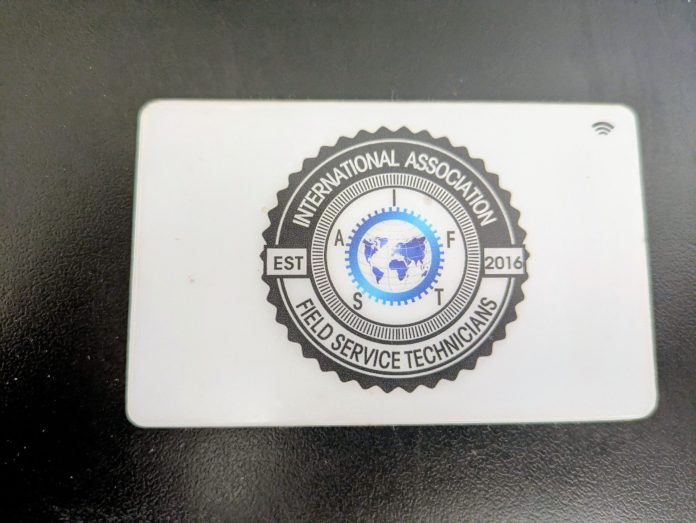The mortgage field services industry has long been defined by its precarious balance between regulatory oversight and private enterprise, but the ongoing U.S. government shutdown has plunged that balance into chaos. For weeks now, the very agencies responsible for data distribution, verification, and compliance tracking have gone silent. Systems once taken for granted—HUD portals, FEMA data archives, and census-based reporting frameworks—have gone dark. The result is what many are now calling the “Data Dark Age,” a term whispered among contractors, vendors, and asset managers alike to describe an industry operating blind. When 4,000 federal employees, including 442 at HUD, are laid off or furloughed, the gears that keep mortgage servicing compliant grind to a halt. Without access to the data pipelines that underpin inspections, preservation work, and compliance reporting, the entire industry finds itself navigating with a broken compass.
For Field Service Technicians, the shutdown’s effects are immediate and tangible. Their work depends on verified orders, precise timelines, and regulatory definitions of what constitutes “secure,” “preserved,” or “maintained.” Normally, property data flows from federal and state sources, through national field service management platforms, down to regional vendors, and finally to the boots on the ground. But with those sources offline or outdated, technicians and inspectors alike find themselves dispatched based on assumptions rather than facts. Properties once confirmed as vacant through HUD, USDA, and VA records now linger in ambiguity. Laborers arrive at addresses with little more than a GPS pin and a hope that someone upstream got the data right. This confusion creates not only inefficiencies but potential legal exposure for technicians acting without full confirmation of property status. When the government can’t certify the information, the burden shifts downward, unfairly, onto the shoulders of labor.
Inspectors face an equally troubling scenario, albeit from a different angle. Their work—occupancy verifications, property condition reports, and compliance documentation—relies on data authentication to maintain credibility with servicers and investors. In ordinary times, an inspector’s report would reference cross-checked data from HUD’s Neighborhood Watch or ArcGIS FEMA’s floodplain maps or the USNG. Those datasets inform the valuation, risk assessment, and regulatory compliance of properties across the nation. Now, inspectors are submitting reports based solely on physical observations and whatever fragmented information survives in outdated private databases. In some cases, national firms are pressuring inspectors to “certify” conditions they cannot possibly verify, simply to keep orders flowing. The ethical dilemma is clear: report what you know and risk losing the contract, or fabricate stability in an unstable system. And in the recent case of the weeks long collapse of National Field Representatives (NFR) website and datasets, many are still concerned about the veracity of the data and their own personally identifiable information (PII).
At the administrative level, the shutdown exposes how deeply entwined the field services ecosystem is with federal infrastructure. Asset managers, mortgage servicers, and preservation firms all depend on timely HUD guidance and access to FHA case data. When that information stops updating, default management halts. Foreclosure timelines stall not because of compassion or prudence, but because of data paralysis. Contractors can’t confirm occupancy status, inspectors can’t validate conditions, and servicers can’t justify action without risk of compliance violation. This freeze in data flow reveals just how fragile the supposed privatization of the mortgage servicing sector really is. For an industry that prides itself on independence and efficiency, it now leans heavily on government systems it once derided as bureaucratic.
Meanwhile, the rank-and-file workers—the Field Service Technicians and Inspectors—are left holding the bag. Work orders arrive late or not at all. Vendors, citing “government uncertainty,” delay payments or withhold them outright. A grass cut that should have been performed weekly now stretches into months, as property conditions degrade and community blight spreads. Technicians are caught between contracts demanding performance and clients who can’t confirm legitimacy. In several reported cases, local law enforcement has questioned laborers on properties where federal data was supposed to confirm vacancy. The lack of authoritative verification not only jeopardizes paychecks but personal safety. A simple task like boarding a door or removing debris becomes a potential trespass when no one can say with certainty who owns the home or what agency holds title.
Inspectors, for their part, are increasingly skeptical of the data they are asked to rely on. In interviews across several states, many report being told to continue “business as usual” despite knowing their data sources are frozen. Without HUD’s real-time data feeds, occupancy status becomes a matter of guesswork. Some firms are even recycling old property condition photos to meet submission quotas, a practice that undermines the integrity of the entire inspection process. The blame, of course, doesn’t rest solely with these individuals but with the systemic collapse of transparency. When the government goes dark, those who depend on it for verified truth are forced to improvise, and in this industry, improvisation can have grave consequences.
Economically, the Data Dark Age has amplified preexisting inequalities. Larger national firms with internal data archives and proprietary software can weather the disruption. Smaller regional vendors and independent contractors cannot. They depend on public datasets to validate assignments and defend their actions in disputes. The shutdown has widened the gap between those with access and those without, turning data into a new form of capital. In effect, the privatization of public data has begun—not through policy but through paralysis. Those who can afford to store and replicate government data from before the shutdown hold the keys to continued operation, while everyone else drifts in uncertainty. It’s a silent stratification that reinforces the industry’s most exploitative tendencies.
The ethical implications are profound. The mortgage field services industry has long operated in a gray zone where accountability and transparency are contingent on convenience. The shutdown strips away the illusion of order, exposing how dependent every actor truly is on shared, verifiable information. Without data, trust collapses. Inspectors distrust their clients, technicians distrust their orders, and the public distrusts anyone showing up at a property with a clipboard or camera. This erosion of trust undermines the very concept of field service work as a legitimate trade. It paints laborers as intruders, not professionals, and inspectors as guessers rather than assessors. The Data Dark Age, in this sense, is not only about missing data but about the loss of institutional credibility.
As the shutdown drags on, some within the industry are taking matters into their own hands. Independent associations, including labor-led initiatives like the International Association of Field Service Technicians (IAFST), are pushing for decentralized verification systems that don’t rely solely on federal databases. The idea is to create a worker-driven registry of verified field activity, one that can operate autonomously during government disruptions. Such efforts mark a fundamental shift in how data sovereignty is understood in the field services world. It’s no longer enough to wait for Washington to turn the lights back on. Labor is beginning to realize that without control over its own verification tools, it will always be at the mercy of systems that can vanish overnight.
Ultimately, the Data Dark Age will be remembered not just for the loss of information but for the revelation of dependence. The mortgage field services industry, often portrayed as a self-sustaining private enterprise, has been exposed as a system that cannot function without the constant hum of government data. Technicians and inspectors—the backbone of property preservation and assessment—have borne the brunt of that failure. Their work continues in the dark, guided more by experience and instinct than by the data that once defined their precision. Until the shutdown ends and the servers flicker back to life, the industry remains adrift in uncertainty. The question that lingers is whether, when the data returns, the workers who kept the lights on in the dark will finally be seen for what they are—the only part of this machine that never stopped running.







